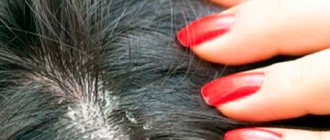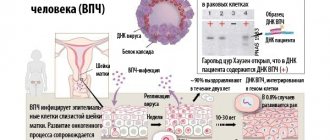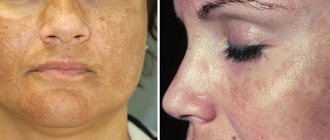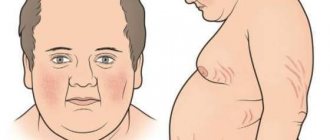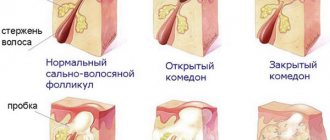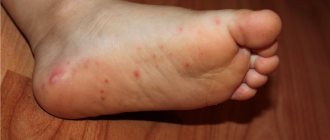Age-related changes are manifested not only in the functioning of the internal systems of the body, they are also reflected on the skin. And we're not talking about wrinkles at all. Senile warts are one of the most common reactions that accompany the aging of the body. This is the common name for the disease, and in medical practice the phenomenon is called “senile keratoma”. The disease is treatable, and the spread of tumors throughout the body can be prevented using both folk remedies and synthetic drugs.
About the disease
Senile warts are benign neoplasms that protrude above the skin and have a keratinized surface. Most often, their appearance can be observed after forty years. But there have been cases of growth of tumors in people of mature age.
Keratomas are dangerous because there is a risk of their degeneration into malignant tumors or squamous cell carcinoma. Therefore, you should not neglect such growths. It is better to consult a doctor, and if they do not pose any danger, carry out preventive diagnostics every few years. A senile wart does not go away on its own; the older a person gets, the greater the likelihood of noticing changes in the color, size, and contours of the growth. Males and females are equally susceptible to the disease.
Seborrheic keratosis: diagnosis
If it is necessary to identify a wart, a dermatologist can rely on the following factors, which make it possible to accurately make a diagnosis:
- the patient is elderly;
- there is a clinical picture that corresponds to the characteristics of seborrheic keratosis;
- there are no signs that the neoplasm is malignant;
In some cases, a biopsy of a piece of seborrheic keratoma tissue is prescribed, which makes it possible to verify the absence of cancer cells.
Important!!! If an elderly person has a formation on the skin that resembles a senile wart, it is recommended to consult a dermatologist, as you may miss the onset of the development of epithelial surface cancer.
To treat papilloma, it is important to follow the recommendations of a specialist. A dermatologist must distinguish between a senile wart and Clark's dysplastic nevus, which has a keratotic form. This disease is characterized by:
- the size of the pigment spot exceeds 0.5 cm;
- such a formation is an accumulation of melanocytes located inside the skin;
- can often degenerate into melanoma;
- can only be treated through surgery;
- The main cause of this disease is the proliferation of skin cells that produce pigment (melanocytes).
Causes
In the case of ordinary warts, it is not difficult to determine the cause of their appearance - it is the papilloma virus. But keratosis has a slightly different nature. It has nothing to do with viruses and is not contagious to others. Unfortunately, today experts cannot name the exact reason for its appearance.
As you age, numerous warts may appear on your body.
Until recently, there were assumptions that contributing factors were:
- malfunction of the sebaceous glands. As a result, sebum is secreted in excess, seborrhea occurs, its oily form is especially dangerous;
- long-term exposure to ultraviolet radiation (both natural and artificial) on the skin;
- increased blood cholesterol levels;
- unbalanced diet with a predominance of animal fats;
- the presence of chemical or mechanical injuries to the epidermis;
- lack of vitamins.
However, until now, none of these factors has been confirmed as the basis for the growth of warts. Long-term observations show that there are two conditions that reliably accompany the disease:
- hereditary predisposition,
- age over 40 years.
How to remove senile warts?
The photo shows the process of removing seborrheic keratosis
The best methods recommended for the removal of seborrheic keratomas are currently recognized as:
- Laser coagulation. Many clinics use lasers because it is a relatively cheap method to remove skin tumors. The laser beam simply burns the affected tissue and it evaporates. In this case, local anesthesia is used. A small crust remains at the site of the keratoma, covering the indentation; it heals in about 14-30 days. When the crust falls off, only healthy epithelium remains in its place. Removal takes only a few minutes. In Russia, laser removal will cost from 140 rubles per papilloma; in Ukraine, the price starts from 400 UAH.
- Radio wave method using the Surgiton apparatus. The principle of the procedure is the same as for laser coagulation. The tissue of a senile wart evaporates under the influence of a directed wave. Local anesthesia is used. The price of the operation in Russia starts from 200 rubles, in Ukraine - from 385 UAH.
- Cryodestruction or freezing with liquid nitrogen. Liquid nitrogen is applied to the keratoma, it gradually turns white and dies. In rare cases, a small blister may remain at the site of the operation, which is opened in a short time. There is healthy skin underneath, but the mark will resemble a burn. If we talk about the price of the procedure in Russia, it starts from 500 rubles, in Ukraine it can start from 40 UAH.
- Electrocoagulation using high-frequency current. A metal “loop” cuts off the papule, no blood is released, and healthy tissue is completely disinfected. The price of the procedure in Russia starts from 500 rubles, in Ukraine - from 135 UAH.
- Surgical method. Using a scalpel, the surgeon excises the damaged tissue, but after the procedure, a whitish scar may remain at the site of the senile wart, as a cosmetic suture is applied. This method is the most traumatic and also requires more time for the operation itself and the recovery period. The cost of such an operation is quite high, since it is performed by a surgeon. The price in Russia starts from 3,000 rubles, in Ukraine prices depend on the location of the papilloma and the starting price is 500 UAH.
Symptoms
The localization of senile warts, or age-related keratomas, is on the surface of the skin, with the exception of the palms and soles. Most often, growths appear on the chest, back, face and limbs.
At first, the keratoma looks like a pigmented spot of a vague shape. Its color can vary from beige to black. Later, such spots may darken, rise more above the skin, and unite into entire groups. The upper part of the neoplasm is covered with keratinized scales, soft and loose to the touch. When scraped, the keratinized particles are easily removed, revealing a pink base with papillary oblong projections.
Read also:
Removing warts in different ways
Visually, senile warts differ from each other depending on the form and stage at which the disease is located.
Keratomas in the early stages do not cause any discomfort. Later, as the warts grow, itching and inflammation may occur. The progression of the disease occurs slowly, sometimes taking several decades.
Indications for removal of seborrheic keratomas
The reasons why a specialist may recommend removal of senile warts are as follows:
- There is a suspicion of skin cancer. To do this, you should be examined by a dermatologist once a year and follow all instructions.
- If the patient has expressed a desire to get rid of the manifestations of seborrheic keratosis.
- When skin papillomas are constantly exposed to injury, for example, by rubbing against clothing.
- If a papule has formed on the surface of the face, and therefore brings cosmetic and psychological discomfort.
- The number of senile warts on the skin has increased.
Forms
According to numerous observations of neoplasms, it was possible to identify five forms of wart development with different characteristics.
- The spotted form begins to develop from small brown spots. If the location is the face, then a pink or yellow color is possible. At this stage, the spots do not cause any discomfort; their shape is not yet clearly defined. In most cases they have a smooth surface, but minor roughness is allowed; elevation above the skin does not yet occur. One or more spots with increased pigmentation may appear.
- The follicular (nodular) stage is characterized by the first signs of elevation above the skin. Keratomas grow slowly, but the dynamics remain. Externally, they look like gray or dark gray formations of irregular shape. During this period, the first scales may appear, but they are practically invisible, because still adhere very tightly to the underlying layers.
- The plaque (keratonic) form is determined by the formation of senile keratomas. They look like a gray-brown plaque with a dense crust and clearly defined boundaries. The height of the growth at this time is several millimeters. If you scrape off the crust that has formed, you will find a bleeding surface underneath.
- The seborrheic stage involves the process of combining several growths into one. Cracks form at the place where their border was. During this period, the process of warts spreading throughout the body is most active. The surface of the plaques peels off, and the scales that have fallen off the top layer may fall off. As a result, the tumor begins to bleed and may become inflamed and itchy, causing discomfort to the patient. The seborrheic stage of wart development requires mandatory consultation with a specialist.
- The cutaneous horn is the final stage of growth development. At this time, it is completely covered with horny accumulations, protruding significantly above the skin. Its color is dark or even black. If the wart matures before this stage, it is imperative to find out the nature of the neoplasm (benign or malignant). This is due to the fact that such a growth may conceal a squamous cell cancer.
Types of senile warts.
Are keratomas dangerous?
Senile papillomas do not pose a danger to others because they are not contagious. If the formation does not pose a danger, the indication for removal is a cosmetic imperfection. The resulting keratomas require timely, high-quality therapy due to the risk of degeneration of an age-related wart into a malignant neoplasm as a result of frequent injury or exposure to sunlight. Other reasons include the impact of:
- psychological discomfort caused by an external aesthetic defect (for example, due to the formation of a cutaneous horn);
- danger of regular damage.
Treatment
To cure a disease, you need to purposefully influence the cause of its occurrence. And since the question about the causes of senile warts remains unanswered, doctors practice complex therapy.
If warts cause discomfort, you should consult a doctor.
It is important to understand that any drug for the treatment of age-related keratomas must be prescribed by a doctor. This is due to the fact that by the age of 40-50, in addition to warts, a person has a number of health problems, and drug treatment with certain drugs can cause harm. Therefore, be sure to consult a doctor if:
- the growth is inflamed;
- bleeding;
- increased in size, merged with others.
Drug treatment
Complex therapy includes the treatment of senile warts with medications in parallel with traditional methods. The following drugs are used:
- Ascorbic acid in increased doses. This allows you to maintain immunity and increase the body's resistance. As a result, the dynamics of wart growth decreases, and new ones do not appear. A loading dose of the vitamin for older people threatens urolithiasis or gastritis, so the course is carried out for 5-7 days, after which maintenance therapy is continued at the recommended doses for another 1-2 months.
- Hormonal creams and ointments can reduce skin pigmentation and the growth rate of keratomas. They are used in short courses. Prolonged contact of hormonal ointment with the skin can cause fungus. For therapy, Flucinar, Fluorocort, and Akriderm are most often prescribed.
- Biolitom-ELP ointment is capable of restraining benign growths. It is created on the basis of medicinal plants, which is suitable in case of contraindications to hormonal ointments.
A healthy lifestyle is the best assistant in the fight against illnesses.
General recommendations for slowing the growth of warts are:
- limiting sun exposure;
- following a diet with a high content of vegetable fats and a reduction in animals;
- controlling negative emotions and avoiding stress;
- increasing the amount of vitamins in the body by eating fresh fruits and vegetables.
Surgical treatment
Large senile warts, old or those that threaten health, are removed through interventions.
There are several types of medical procedures that allow you to quickly get rid of growths:
- cryodestruction, which involves cauterization with liquid nitrogen;
- electrocoagulation;
- laser removal;
- surgical intervention;
- destruction of warts using radio wave radiation.
The last three methods are used to remove malignant tumors.
Important! It is necessary to get rid of senile keratomas only according to medical prescriptions.
Because after removal, sometimes roots remain, and the growth may appear again after a while.
